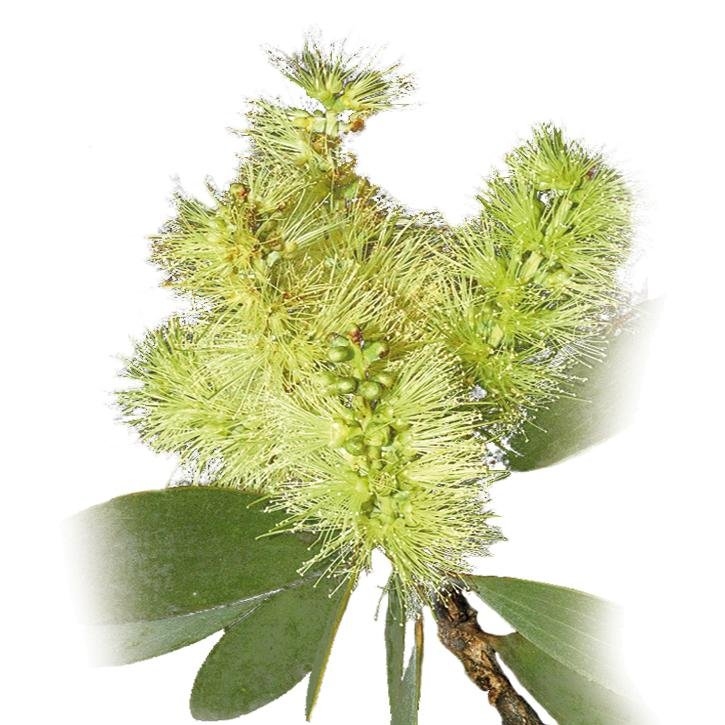A small evergreen tree of the Myrtaceae family with bark cracked into thin sheets. The leaves are alternate, shortly petiolate, lanceolate or elliptic and aromatic. The flowers are cream, yellow, greenish yellow and rarely red and form spikes at the ends of the branches.
Leaves.
Essential oil: cineol (50-65%), terpineol, pinene, limonene, citrene, terebinthene, valeric ester, acetic ester and butyric ester.
The essential oil may cause irritation of the skin and mucous membranes.
They have not been described.
The essential oil, administered orally, may cause nausea, vomiting and diarrhea. In particularly sensitive persons it may trigger allergic reactions (bronchospasm).
-.Monografía de la SEFIT (Sociedad Española de Fitoterapia).
-.Brophy Joseph J.; Craven Lyndley A.; Doran John C. (2013). Melaleucas: their botany, essential oils and uses. Canberra: Australian Centre for International Agricultural Research. p. 327. ISBN 9781922137517.
-.Thais Rossini de Oliveira, Anderson Laerte Teixeira, Janaina Priscila Barbosa et al. Melaleuca spp essential oil and its medical applicability. A brief review. Brazilian Journal of Natural Sciences. March 2020. Vol 3, nº 1page 249-258. ISSN 2595-0584
